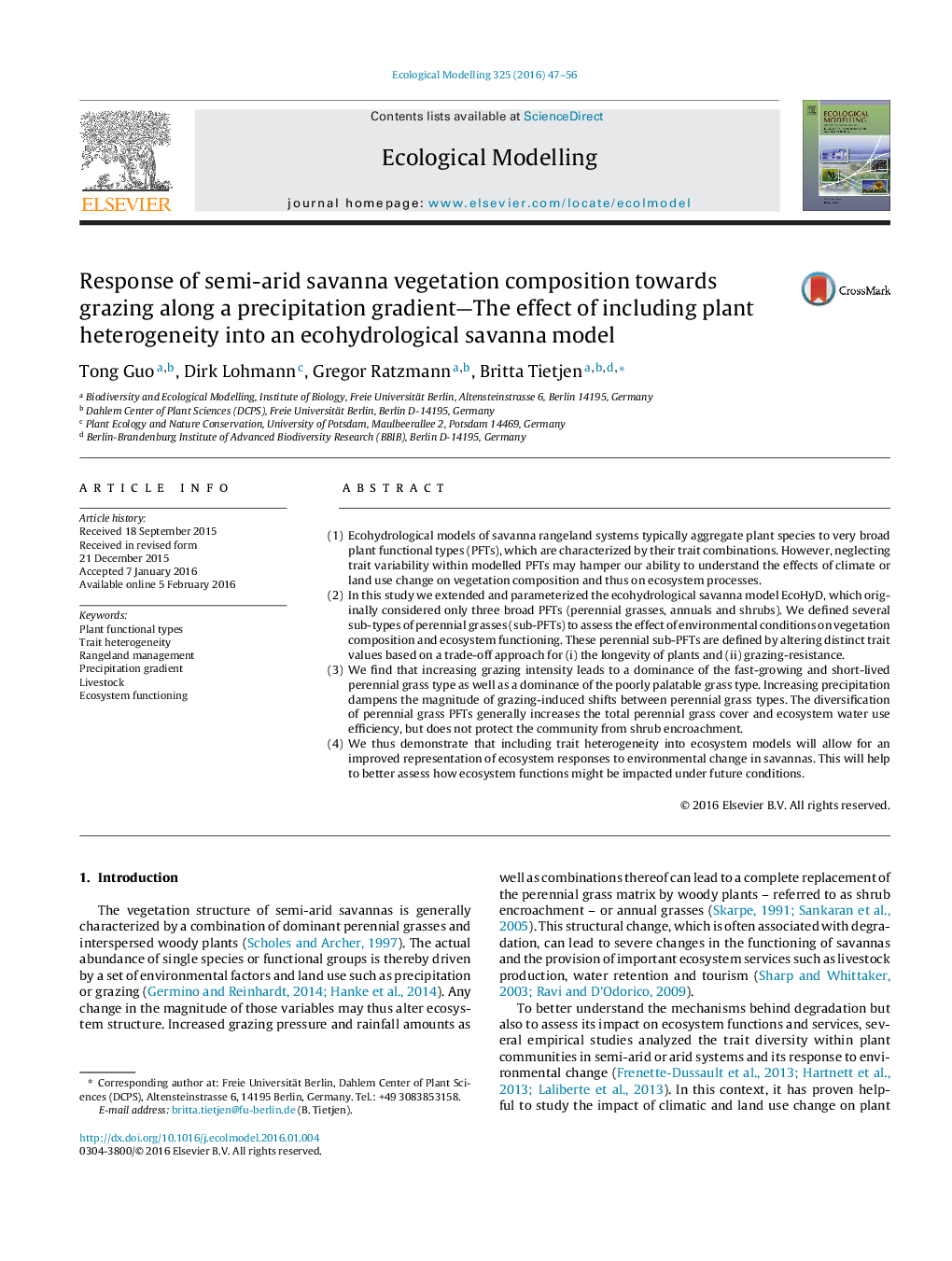| Article ID | Journal | Published Year | Pages | File Type |
|---|---|---|---|---|
| 4375582 | Ecological Modelling | 2016 | 10 Pages |
•Savanna models often aggregate plants into broad plant functional types (PFTs).•We modelled trait heterogeneity of perennial grasses to assess community shifts.•Dominance of sub-PFTs is impacted by land use and mean annual precipitation.•Trait heterogeneity increases vegetation cover and ecosystem water use efficiency.
(1)Ecohydrological models of savanna rangeland systems typically aggregate plant species to very broad plant functional types (PFTs), which are characterized by their trait combinations. However, neglecting trait variability within modelled PFTs may hamper our ability to understand the effects of climate or land use change on vegetation composition and thus on ecosystem processes.(2)In this study we extended and parameterized the ecohydrological savanna model EcoHyD, which originally considered only three broad PFTs (perennial grasses, annuals and shrubs). We defined several sub-types of perennial grasses (sub-PFTs) to assess the effect of environmental conditions on vegetation composition and ecosystem functioning. These perennial sub-PFTs are defined by altering distinct trait values based on a trade-off approach for (i) the longevity of plants and (ii) grazing-resistance.(3)We find that increasing grazing intensity leads to a dominance of the fast-growing and short-lived perennial grass type as well as a dominance of the poorly palatable grass type. Increasing precipitation dampens the magnitude of grazing-induced shifts between perennial grass types. The diversification of perennial grass PFTs generally increases the total perennial grass cover and ecosystem water use efficiency, but does not protect the community from shrub encroachment.(4)We thus demonstrate that including trait heterogeneity into ecosystem models will allow for an improved representation of ecosystem responses to environmental change in savannas. This will help to better assess how ecosystem functions might be impacted under future conditions.
